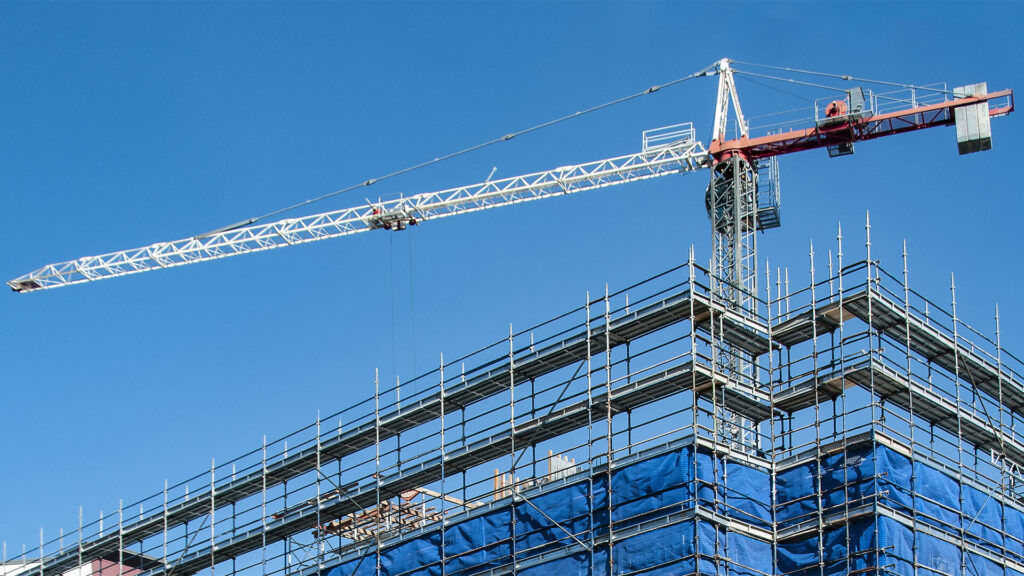The Basics of Light Commercial Construction: A Guide for Business Owners
Light commercial construction refers to the construction of small commercial buildings, such as retail stores, offices, restaurants, and other small businesses. These buildings typically have a smaller footprint and lower height than larger commercial buildings, and they are designed to be more cost-effective and efficient.
-
Definition of light commercial construction:
Light commercial construction involves the design, planning, and construction of small commercial buildings that are typically less than 10,000 square feet in size. These buildings are often one or two stories tall and can include a wide range of structures, from stand-alone retail stores to strip malls, office buildings, and small warehouses.
-
Why it matters for business owners:
For business owners, light commercial construction is an important consideration when looking for a location to set up their business. It can provide them with a customized space that meets their specific needs and helps them create an environment that is conducive to productivity and growth.
Additionally, investing in a well-designed and well-built commercial space can have a positive impact on a business’s bottom line. A well-designed space can attract more customers, improve employee morale and productivity, and ultimately lead to increased revenue and profitability.
In the next sections of this guide, we’ll explore the basics of light commercial construction, including how to understand your needs, plan your project, prepare for construction, navigate the construction process, and complete your project successfully.
Understanding Your Needs
Before embarking on a light commercial construction project, it’s essential to identify your business needs and goals to ensure that the building meets your specific requirements. Here are some important considerations to keep in mind during this process:
-
Identifying your business needs and goals:
The first step in any light commercial construction project is to identify your business needs and goals. This includes determining what type of business you’re operating, what services you offer, how many employees you have, and what kind of space you require.
For example, if you’re opening a restaurant, you’ll need a space that has a commercial kitchen, dining area, and restrooms, while an office space might require private offices, conference rooms, and a reception area.
-
Choosing the right location:
Once you’ve identified your business needs, the next step is to choose the right location for your building. Factors to consider include proximity to customers, accessibility, visibility, and overall convenience for employees and customers.
It’s also important to consider the local market, including competition and market demand, to ensure that your business can succeed in the chosen location.
-
Understanding zoning laws and regulations:
Before proceeding with a light commercial construction project, it’s crucial to understand the zoning laws and regulations in your area. This includes identifying the appropriate zoning classification for your business and ensuring that your building plans comply with all local zoning regulations.
This can include restrictions on building size, height, and setbacks, as well as requirements for parking, landscaping, and signage.
By understanding your business needs, choosing the right location, and navigating zoning laws and regulations, you can lay the groundwork for a successful light commercial construction project that meets your specific needs and goals.
Planning Your Project
Once you have a clear understanding of your business needs and have identified the right location, it’s time to start planning your light commercial construction project. Here are some important steps to take during this process:
-
Hiring a construction team:
One of the most important decisions you’ll make during the planning phase is choosing the right construction team. This includes architects, engineers, contractors, and other professionals who will be involved in the project.
It’s essential to do your research and select a team that has experience with light commercial construction projects and a proven track record of success. They should also be able to work within your budget and timeline and be willing to collaborate with you throughout the project.
-
Developing a project timeline:
Once you’ve assembled your construction team, the next step is to develop a project timeline. This should include key milestones, such as obtaining permits, completing site preparation, framing and foundation, electrical and plumbing work, and interior finishes.
Your construction team can help you create a realistic timeline based on the scope of the project, available resources, and other factors that could impact the construction process.
-
Establishing a budget:
Another important step in planning your light commercial construction project is establishing a budget. This includes determining how much you’re willing to spend on the project and breaking down the costs of each phase of the construction process.
Your construction team can help you create a detailed budget based on your needs and goals, taking into account factors such as labor costs, materials, permits, and other expenses.
By hiring a construction team, developing a project timeline, and establishing a budget, you can set yourself up for a successful light commercial construction project that meets your business needs and helps you achieve your goals.
Preparing for Construction
Once you’ve completed the planning phase, it’s time to start preparing for the actual construction of your light commercial building. Here are some important steps to take during this phase:
-
Site Preparation:
Before construction can begin, the site needs to be properly prepared. This includes grading the land, clearing any trees or vegetation, and preparing the foundation.
Your construction team can work with you to ensure that the site is properly prepared to accommodate the building and that any necessary utilities, such as water, sewer, and electricity, are in place.
-
Obtaining Necessary Permits:
Before construction can begin, it’s essential to obtain any necessary permits and approvals from local authorities. This can include building permits, zoning approvals, and environmental permits.
Your construction team can help you navigate the permit process and ensure that all necessary approvals are obtained before construction begins. Failure to obtain the necessary permits can result in costly delays and fines.
-
Pre-Construction Meetings:
Before construction begins, it’s important to hold pre-construction meetings with your construction team to review the project plans, discuss any potential issues or concerns, and establish communication protocols.
This can help ensure that everyone involved in the project is on the same page and that any potential problems are addressed before construction begins.
By properly preparing the site, obtaining necessary permits, and holding pre-construction meetings, you can help ensure that your light commercial construction project gets off to a smooth start and progresses as planned.
The Construction Process
After the site has been prepared and necessary permits obtained, the construction process can begin. Here are the key phases involved in the construction of a light commercial building:
-
Framing and foundation:
The first step in the construction process is framing and foundation. This involves pouring the concrete foundation, framing the walls and roof, and installing any necessary structural components.
Your construction team will work closely with you to ensure that the framing and foundation are done according to plan and meet all relevant building codes and regulations.
-
Electrical and plumbing:
After the framing and foundation are completed, the next step is to install electrical and plumbing systems. This includes running electrical wires and installing plumbing fixtures, such as toilets, sinks, and water heaters.
Your construction team will work with licensed electricians and plumbers to ensure that all systems are installed safely and to code.
-
HVAC installation:
Once the electrical and plumbing systems are in place, the next step is to install the HVAC system. This includes installing heating, ventilation, and air conditioning systems to ensure that the building is comfortable and energy-efficient.
Your construction team will work with licensed HVAC contractors to ensure that the system is installed safely and to code.
-
Interior finishes:
After the major systems are in place, the next step is to complete the interior finishes. This includes installing flooring, cabinetry, countertops, and other finishes.
Your construction team will work with you to choose finishes that meet your needs and budget and that are durable and attractive.
-
Inspections and approvals:
Finally, after the construction is completed, the building will need to be inspected by local authorities to ensure that it meets all relevant building codes and regulations. This can include inspections of electrical, plumbing, and HVAC systems, as well as a final inspection of the finished building.
Your construction team can help you schedule and prepare for these inspections to ensure that the building is approved for occupancy.
By following these key phases of the construction process, you can ensure that your light commercial building is built to your specifications, meets all relevant building codes and regulations, and is ready for occupancy.
Completion and Beyond
Once construction is complete and the necessary inspections and approvals have been obtained, there are still important steps to take to ensure the long-term success of your light commercial building. Here are some key considerations:
-
Final walkthrough and punch list:
Before finalizing the project, it’s important to conduct a walkthrough with your construction team to identify any remaining issues or concerns. This is known as a punch list, and it typically includes items such as touch-up painting, fixing minor defects, and ensuring that all systems are functioning properly.
Your construction team can work with you to finalize the punch list and ensure that all items are addressed before the project is considered complete.
-
Maintenance and upkeep:
After the building is complete, it’s important to establish a plan for ongoing maintenance and upkeep. This can include regular cleaning, HVAC system maintenance, and periodic inspections of electrical and plumbing systems.
Your construction team can provide guidance on the best maintenance practices for your building and help you establish a schedule for regular maintenance.
-
Future renovations or expansions:
Finally, it’s important to consider the potential for future renovations or expansions. As your business grows and changes, your building needs may change as well.
Your construction team can work with you to develop plans for future renovations or expansions, such as adding additional floors, expanding the building footprint, or updating the interior finishes.
By considering these key considerations after construction is complete, you can ensure that your light commercial building remains a valuable asset to your business for years to come.
Conclusion
In summary, constructing a light commercial building is a complex process that requires careful planning, collaboration, and attention to detail. Here are the key points to remember:
- Understanding your business needs and goals is crucial when planning a construction project.
- Hiring a skilled construction team, developing a project timeline, and establishing a budget are essential for success.
- Preparing the site, obtaining necessary permits, and holding pre-construction meetings can help ensure a smooth construction process.
- Key phases of construction include framing and foundation, electrical and plumbing installation, HVAC installation, and interior finishes.
- Completing a final walkthrough and punch list, establishing a maintenance plan, and considering future renovations or expansions are important for the long-term success of your building.
As a business owner, entering the construction process can be overwhelming. However, by working closely with your construction team and following these key steps, you can ensure that your building is constructed to your specifications and meets all relevant codes and regulations.
Our final advice to business owners is to be patient and communicative throughout the process. Construction can be a complex and time-consuming endeavor, but by working collaboratively with your construction team, you can achieve a successful outcome that meets your business needs and goals.



